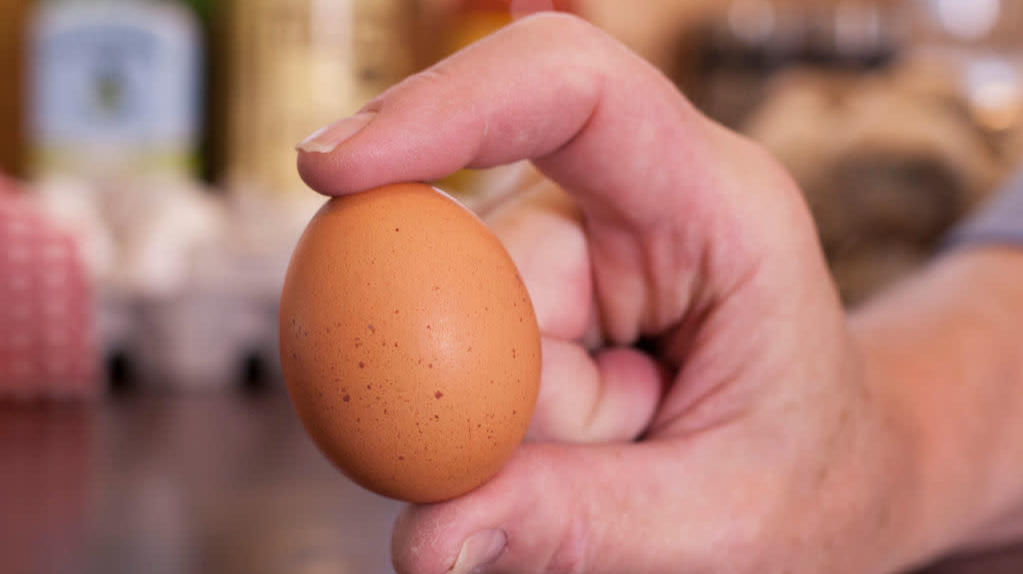TIL You Can Make Hard-Boiled Eggs In The Oven
If you enjoy hard-boiled eggs, but not the boiling, fear not! According to Food52, you can make hard-boiled eggs in the oven. Making hard-boiled (or technically hard-cooked) eggs in the oven is ideal when you are making a large batch of eggs to feed an entire football team.
I once put a whole egg, shell and all, into our wood-fired pizza oven at work. I buried it in the red-hot coals and after a while, it exploded with extreme violence. (I would also like to report that whole oysters, when buried in red-hot coals, can also explode—I'll get into that at a later date.) But that's because I did it wrong. Food52 says that 325 degrees Fahrenheit is the ideal temperature to cook your eggs with the shells on. Here are recommended cooking times:
- For runny to jammy eggs, bake for 20-24 minutes
- For firmer egg yolks, but still soft enough to spread, bake for 25-27 minutes
- For classic hard-boiled texture ideal for egg salad, snacking, and slicing up, bake for 28-30 minutes
Every oven is different, so you may need to make adjustments based off of experimentation. If it's really far off, here's a little primer on how to find out whether or not your oven is preheating to the right temperature.
Now, you're probably not going to want to live on the wild side and have your eggs cook right on the rack, so a muffin pan is ideal to hold your eggs as they bake, so they can't roll around. If you've got to make a bunch of eggs at the same time, consider using a mini muffin pan, as they can hold 24 eggs all at once. If you don't have a muffin pan, a baking sheet will work too; you just might need to take a little extra care when bringing it out of the oven.
While they're baking, some of the eggs might develop brown spots on the shell. Some of those spots will even go deep enough to touch the egg white as well, but this is only a cosmetic issue; you can eat these eggs with spots on them. The spots often occur where the eggs touch bare metal as they're baking.
And as always, prior to peeling, let the eggs cool off in an ice water bath before you peel those shells. I would tell you to use an Eggstractor egg peeling device to handle this step, but we already know that's a terrible idea.
